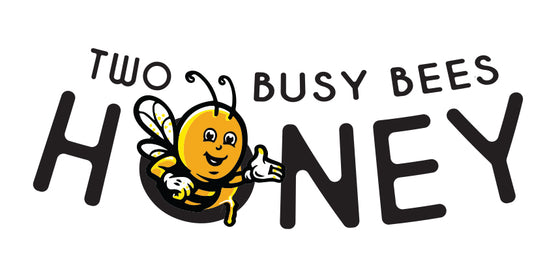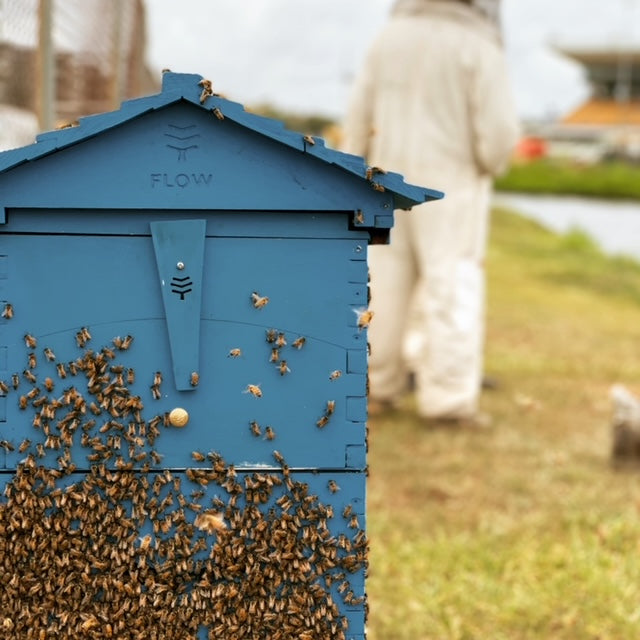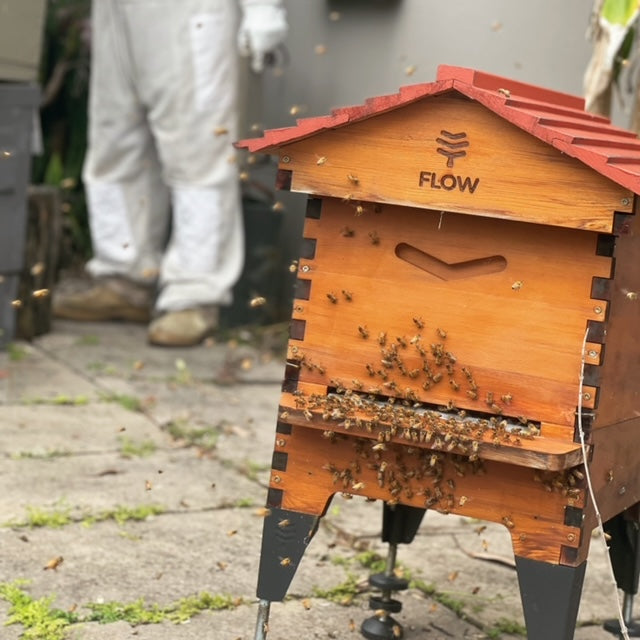International scientists examined over 6,000 pottery vessels to piece together a map of the honeybee at a time when the world had just emerged from the last Ice Age about 10,000 years ago.
There is evidence that mankind was gathering honey in the late Paleolithic times, ten to fifteen thousand years ago. An 8,000-year-old rock painting discovered at Arana Cave near Valencia, Spain, depicts a person climbing a ladder to gather honey from a hive on a cliff face.
This picture (below) was made when humans were still in the hunting and gathering stage, before they had begun to farm or domesticate animals. The figure is naked, with no protection from the stings of bees, meaning that it must have taken great courage and endurance to gather this honey. Perhaps even then it was being used for magical or religious purposes. It is possible that this image was created as a talisman for a successful mission; that if the honey gathering was depicted on stone, it would aid and protect the honey gatherer. After this painting there is a gap in our knowledge of honey gathering lasting thousands of years

Lifestyles were shifting from hunter-gathering towards growing the first crops and keeping animals for meat, milk and skin.
The oldest evidence for human links with the honeybee, dating back almost 9,000 years, was found in what is now Turkey.
By a few thousand years later, beeswax was detected across the Balkan peninsula, including Greece, Romania, Serbia, and then at sites occupied by early farmers in Central Europe.
The first evidence for the use of bees in North Africa was also found around the same time.
In the British Isles, the chemical fingerprint of bee products was found on broken pottery at Neolithic sites in southern England.
The northerly limit appears to be Denmark, above which conditions may have been too harsh for bees to thrive.
Ireland and Scotland also appeared to be off-limits to honeybees at the time.
Prof Alan Outram of the University of Exeter, another lead researcher on the study, said until now there had been a poor understanding of the distribution of the species due to a patchy fossil record.
He added: "Our study of the use of honey and beeswax seems to show there was a northern limit to where they were living during the Neolithic, with no evidence being found in thousands of pottery shards found in Ireland, Scotland, Norway or Sweden."
Sweet tooth
The beeswax may have been used by prehistoric people to glue together stone arrows and spears or to make pots waterproof.
Honey may have provided a rare source of sweetness in their diet.
Prof Outram explained:"The plentiful supply of sugary foods is a very recent phenomenon, but in the past sweet foods were very hard to find and it is clear from our study that the earliest farmers in Europe had a keen interest in exploiting the valuable products of the honeybee."
Recent DNA studies suggest that the honeybee originated in Asia around 300,000 years ago and rapidly spread across Europe and Africa.
The bee's range contracted in Europe during the last Ice Age, but expanded in Africa.
Modern bees face multiple threats from climate change, pesticides and diseases.





